Attention: Sometimes we receive a commission when you make a purchase through the links on our site.
It might not be as valuable as your stamp or baseball card collection, but collecting chicken manure can pay dividends in other ways.
There are several ways to collect chicken manure. According to Dr. Maurice Pitesky, a poultry veterinarian and epidemiologist at UC Davis, it is best to use poultry litter to collect chicken manure. You can also scoop it with a shovel or use a tray to catch it before it hits the ground.
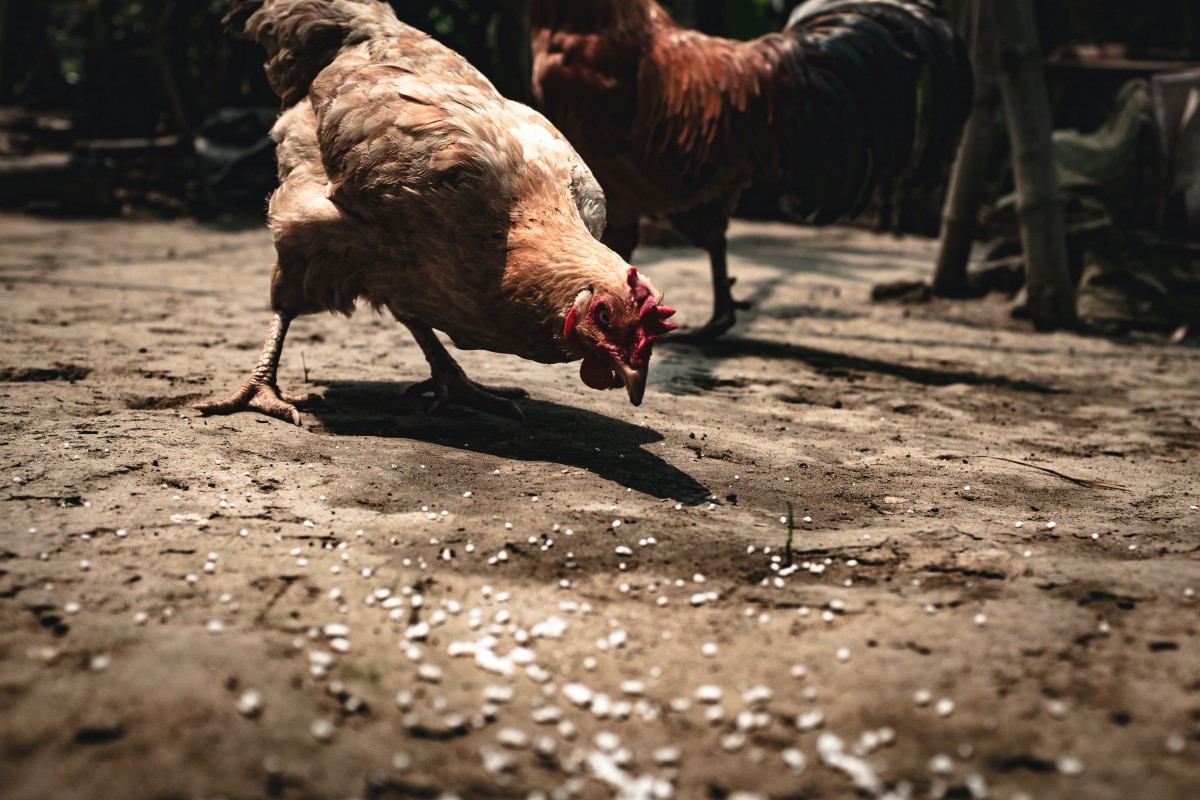
Chicken manure makes a great fertilizer, ever better than cow or horse, manures. But it is important that it has been composted properly. Chicken manure is very high in nitrogen which makes it very “hot.” It will burn your plants if you put fresh manure around them. But enough about using chicken manure as a fertilizer, let’s talk about how to collect it so you can turn it into fertilizer.
So do you have a dirt floor in your coop? Is it covered in chicken manure? There are a lot of different ways you can collect chicken manure. Some are similar in how they are set up but different in how they executed.
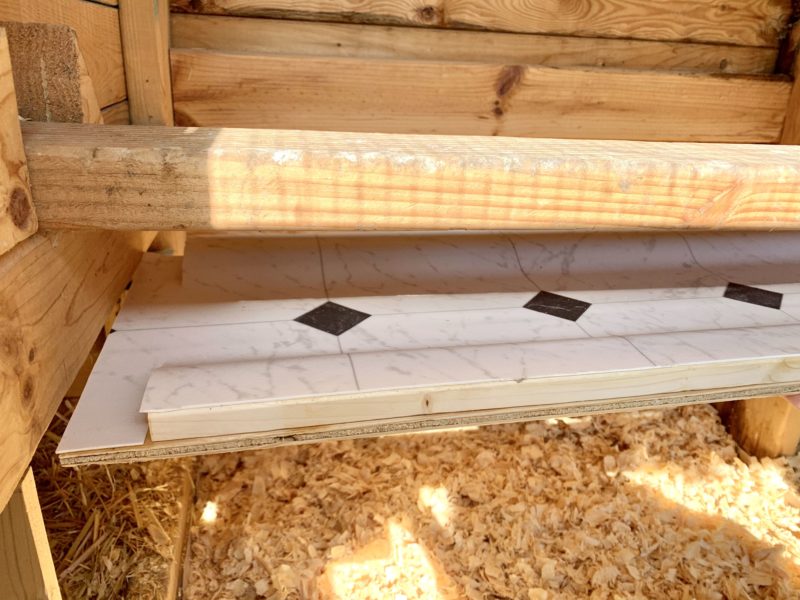
Droppings Boards
Dropping boards, or commonly referred to as poop boards, are a very common way of collecting chicken manure.
The basic principle behind poop boards is to put some type of board underneath the roosting bars to catch the manure as your backyard chickens roost at night. A large majority of the chicken manure you will be able to collect is going to be from underneath the roosting bars. I don’t know why they poop so much at night, but they do. Maybe its because during the day the areas they poop in are more spread out and at night they are all in one spot for a long period of time.
Anyway, droppings boards. I would recommend making this board smooth and easy to clean. The easiest way of doing this is using a smooth melamine board. Another really good option is to glue down scrap linoleum flooring pieces. This gives the added decorative touch, if you even care. If your board is not smooth, it makes it very hard to keep it clean.
Since the board is smooth, it makes it really easy to take a flat edge, like a dust pan, and scrape the chicken manure off the board and into a container, like a five gallon bucket. Do that once a week and your chicken coop should stay pretty clean.
You can also build your poop boards to come off. This makes it easy to take the boards out and spray them down with a hose. This helps keep chicken manure from building up too much on the board.

Sand
Whenever I think of sand, I think of cat poop. And I do not really like thinking about cat poop. Anyway, sand is another way of making it easier to keep your chicken coop clean. It can be used in two different ways. On a droppings bar and as the floor covering.
Sand Droppings Bar
If you build a lip around the edge of your poop bar, you can fill the middle with an inch or two of sand. Then instead of scraping the chicken manure into a container, you can take a scoop and strain the chicken manure out of the sand, like you would with a kitty litter box. To me, it seems like extra work, but to some it is worth the effort. Its additional construction materials and time as well as a longer cleaning time. As well as more money spent to fill and keep filling with sand. But to each their own and no judgments from me.
Sand Floor Covering
The other way that sand is used in a chicken coop is as a floor covering. Charles Weeks wrote about sand in his 1919 book “Egg Farming In California.” He said: “Sand is the only material to use on the floor of poultry houses.” Sand does not absorb the moisture from chicken droppings so you have less issues with flies and other insects. Temperatures will be cooler in the summer and warmer in the winter with sand. You also have less bacteria issues to deal with.
You can read more about a study done about the differences between sand and pine shavings in chicken coops. It was done by The Journal of Applied Poultry Research in 2005.
The more I learned about using sand in a chicken coop, the more I like it. I will look into it more when it comes time to get our coop designed.
Newspapers
This is probably the easiest way to collect chicken manure. Simply lay newspapers in high poop areas, such as under the roosting bar. Every few days, simply wad them up, toss them into the compost pile and lay down new ones. If you still get the daily paper, you probably have stacks of newspapers laying around. With this one, there is no construction that needs to be done. Its not fool proof because your backyard chickens are prone to walk around on it and scatter the chicken manure around. But if your coop is set up right, it could be a pretty easy, effective option.
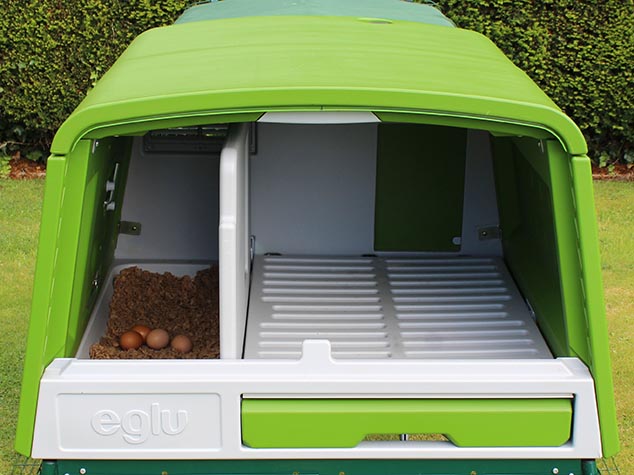
Wire Mesh/Slatted Floor With Tray
All right, this option is probably the most difficult one to accomplish. This one needs to basically be built into the construction of the coop. It can be done after but it makes it more difficult.
With this option, the floor of the entire coop or even just under the roosting bar is either a wire mesh or slatted somehow. Underneath the mesh/slats is a pull out tray. The chicken manure falls through the holes in the mesh or the slats in the floor onto the tray. Then, as needed, you pull the tray out and add the chicken manure that you collected to your compost pile. What is great about this option is when you have access to the tray from the outside of the chicken coop. That way you do not have to actually crawl inside to clean up.
You can see what I’m talking about in the picture above. That is the Eglu Cube from our friends at Omlet. The slats allow the chicken manure to fall through to the tray. Then the slats and the tray both come out for easy cleaning.
P.S. Save 10% by using the coupon code HQ in their US/UK/IE/AUS stores.
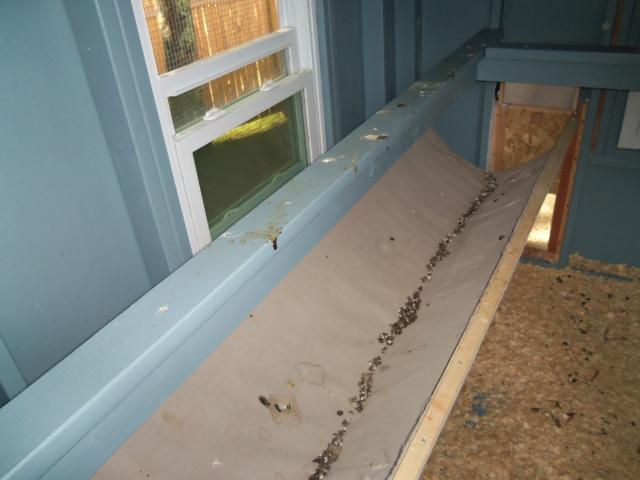
Poop Hammock
This one definitely can give you a funny mental image. But it really is a hammock for chicken poop. It is another pretty popular method for collect chicken manure.
There are several ways to implement it. The easiest ways I have seen are by using shade cloth. You can use a tarp an old banner, shower curtain, etc. Lots of options. Screw some eye bolts into the top and bottom rails of your roosting bars. One in all four corners should be fine. If needed you can add some between these corners as well. Then, if you material has grommets (metal circles on the edges), you can attach hooks to the corners and hand them through the eye hooks.
If you want a more secure hammock, you can attach your hammock to 1×1 length of wood or a PVC pipe on the top and bottom lengths. This makes carrying the hammock easier. As your backyard chickens fill up their hammock with their manure, you can simply unhook it, dump it, spray it if you need, and the hang it up again. Easy peasy.
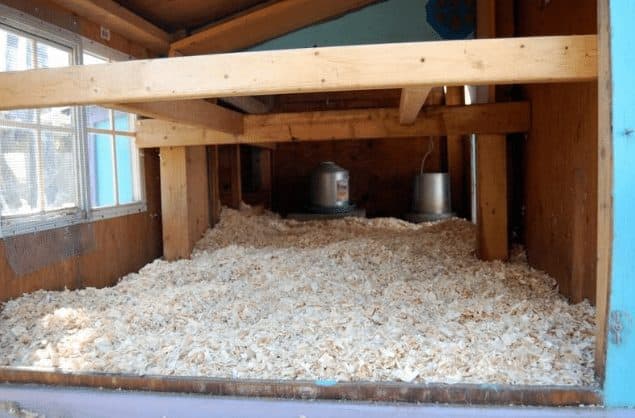
Deep Litter Method
This method is fairly popular as well. Some people call it their winter compost method. It does require a little bit of know how and some attention but it can work really well for you. I won’t go into all the details but I will give you a run down.
In the spring, you want to cover the entire floor with roughly four to six inches of pine shavings or rice hulls. You don’t want to use hay because it is not very absorbent. The shavings or hulls your put down are going to stay put for several months. You do not want to pull them out for quite awhile. This covering is essentially going to turn into compost on it’s own. This pile on your floor does require three things:
Carbon
This is the wood shavings or rice hulls that you initially put down.
Oxygen
Just like a compost pile needs to be turned and moved around, so do these shavings you put down. Here is the good news though, the chickens are going to do it for you. As they walk around, scratch at random stuff, etc. they will stir it up and allow oxygen to get into the shavings.
Ventilation
Make sure your chicken coop has adequate ventilation. As the manure breaks down into compost, proper ventilation is needed to keep the smell and the extra moisture out of the chicken coop. This post (at the bottom) has everything you need to know about designing and setting up your chicken coop.
So it seems easy. Just let your backyard chickens take care of everything. While that is mostly true, you do need to pay attention, especially when you are new at it. If you have too many chickens in your chicken coop or if they spill a lot of water, there could be too much moisture in the bedding. You will need to add more shavings. If the bedding is kinda chalky and white, it needs more oxygen and needs to be turned more.
You want to be able to pick up the bedding and form a ball. That is the perfect moisture level. If you are a visual learner, like me, it will all make more sense as you actually do it. Once the bedding reaches roughly 12 inches high, or its been six months or so, it is time to shovel it out. Leave a couple inches or so and then add in new shavings.
This really is rough overview of the deep litter method. You would recommend doing more research before doing it. It can be great, as long as you are doing it correctly.
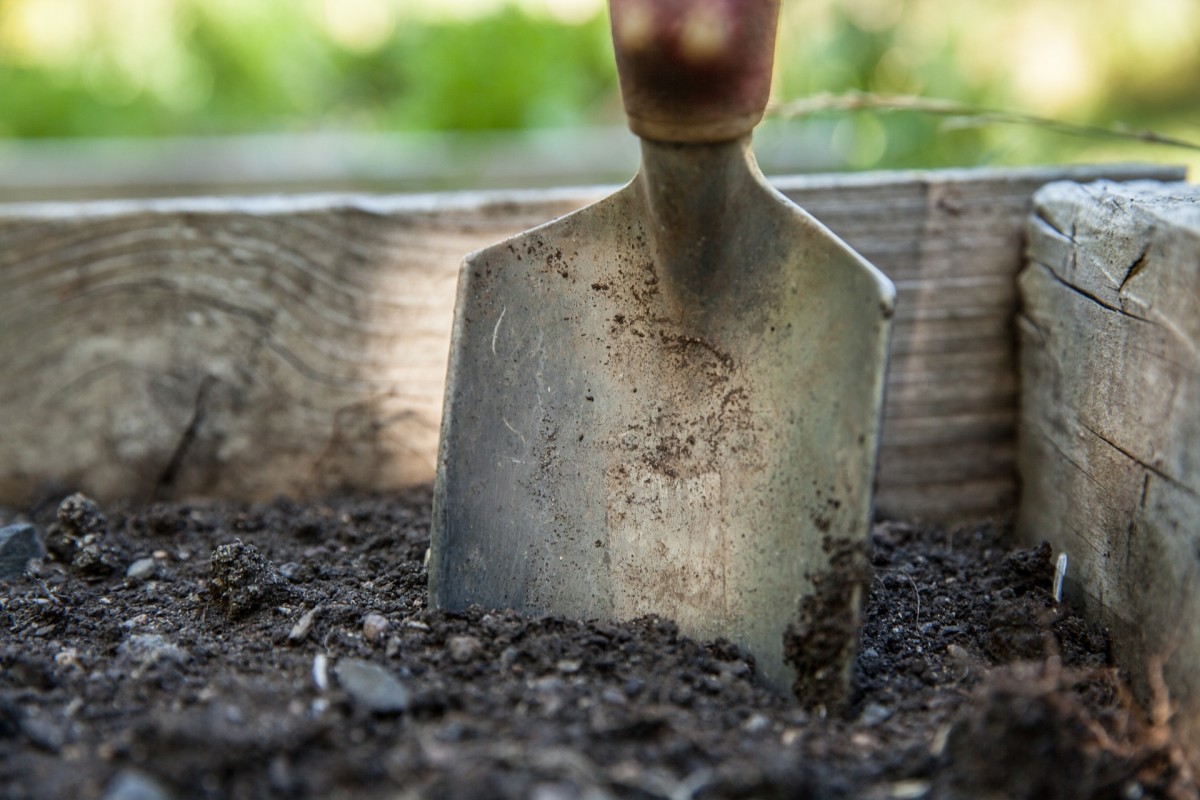
Scoop It With A Shovel
This is a really ineffective method, but most people have a shovel and some time. You can literally walk around your yard, gardens, etc. wherever your chickens roam and scoop their poop with a shovel. It might be easier with a smaller garden spade type shovel. But you can definitely get some chicken manure this way to add to your compost pile.
I hope you found value in this post. What method are you going to use to collect chicken manure in your chicken coop? Make sure you hit the share button on your favorite social media. Remember, sharing is caring and helps us keep growing here at BackyardChickensHQ.com
